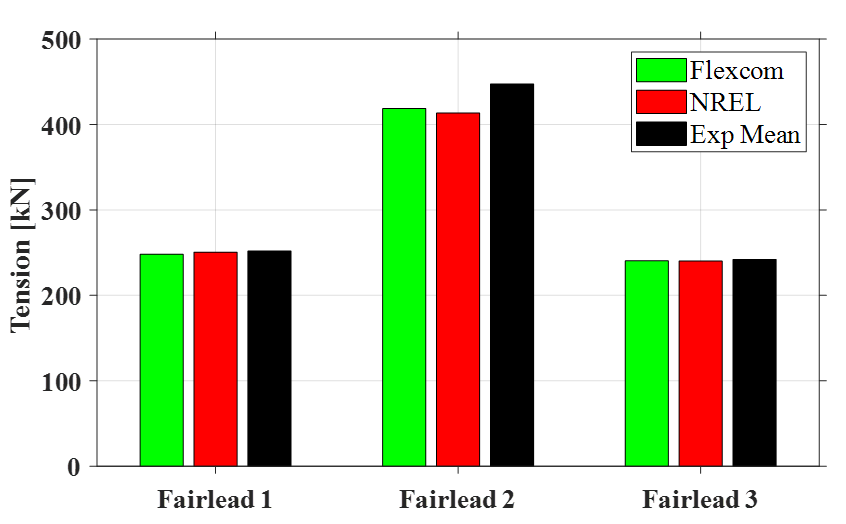The numerical models show very good correlation with the experiments for the fairlead tension in ML1 and ML3 (the lateral lines). The tension in ML2 (the windward line) is significantly higher than the others, due to the different lengths of suspended mooring line in each direction, the uneven angular spacing of the lines (not an even 120°), and the presence of the umbilical cable. Both Flexcom and NREL appear to under-predict the tension in the windward line.

Static Mooring Line Tensions
Given the inherent symmetry in the platform, tensions in keel lines 1 and 6 should be consistent (the same is true for lines 2 and 5, and 3 and 4, respectively). The static tension in each line may be determined analytically based on equilibrium equations and is directly linked to static pitch caused by RNA overhang (roll is assumed zero). The NREL model, and most numerical models, show excellent agreement with the analytical solution. The Flexcom model shows slightly asymmetrical tensions, most likely due to incorrect hull and keel COG locations.

Static Keel Line Tensions